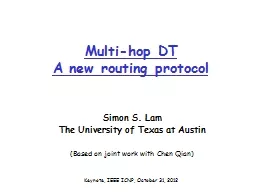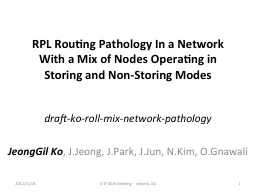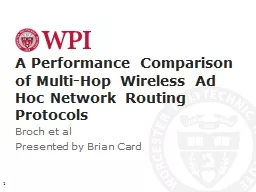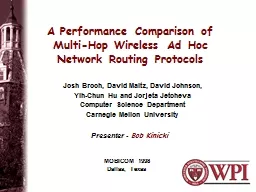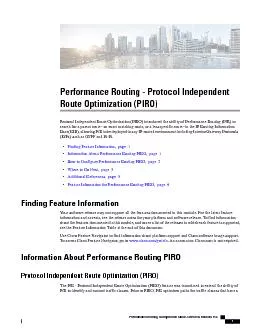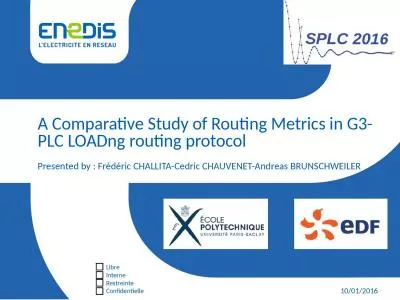PPT-Multi-hop DT A new routing protocol
Author : scoopulachanel | Published Date : 2020-07-04
Simon S Lam The University of Texas at Austin Based on joint work with Chen Qian Keynote IEEE ICNP October 31 2012 Multihop DT Simon S Lam 2 Delaunay triangulation
Presentation Embed Code
Download Presentation
Download Presentation The PPT/PDF document "Multi-hop DT A new routing protocol" is the property of its rightful owner. Permission is granted to download and print the materials on this website for personal, non-commercial use only, and to display it on your personal computer provided you do not modify the materials and that you retain all copyright notices contained in the materials. By downloading content from our website, you accept the terms of this agreement.
Multi-hop DT A new routing protocol: Transcript
Download Rules Of Document
"Multi-hop DT A new routing protocol"The content belongs to its owner. You may download and print it for personal use, without modification, and keep all copyright notices. By downloading, you agree to these terms.
Related Documents

